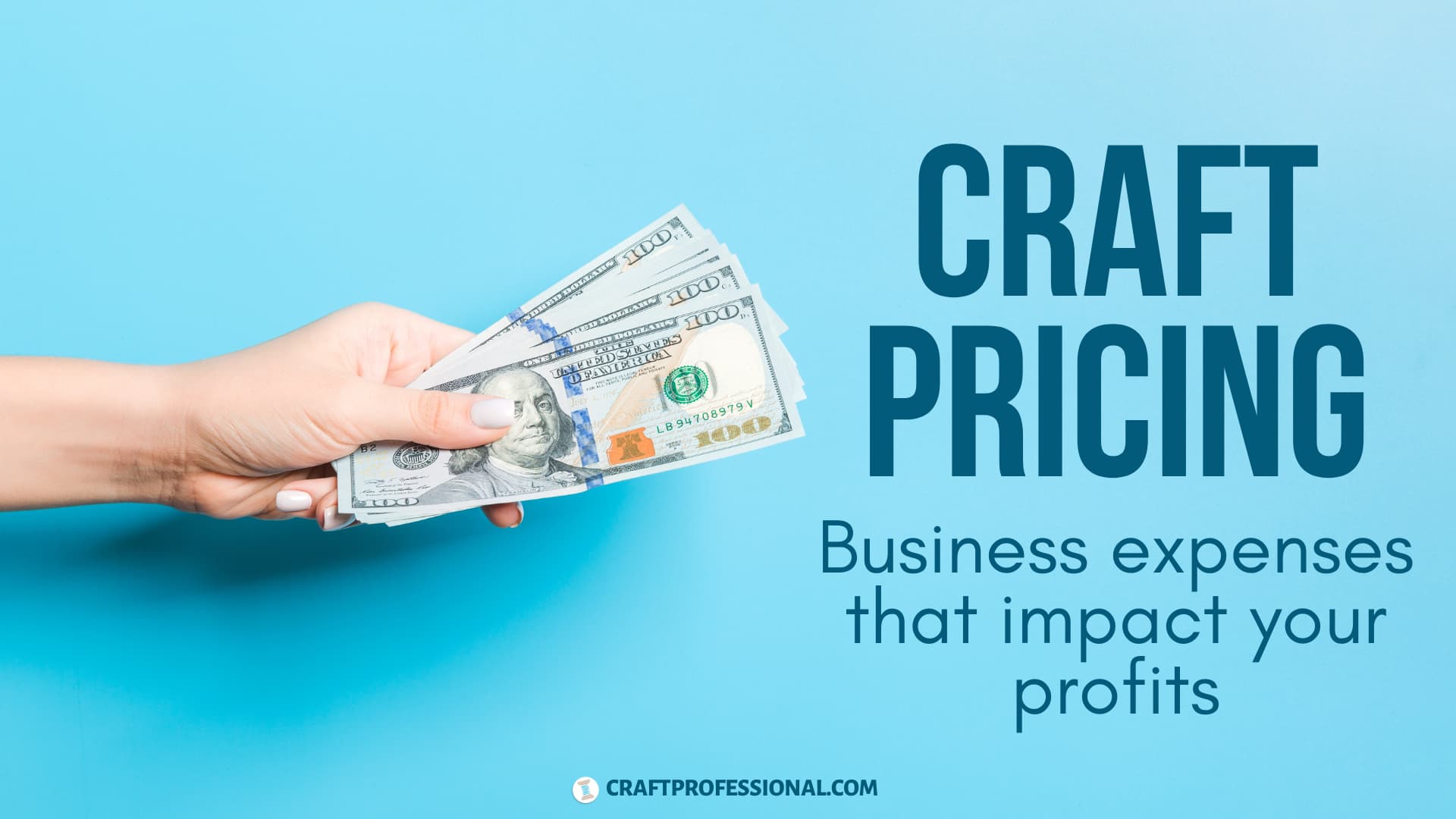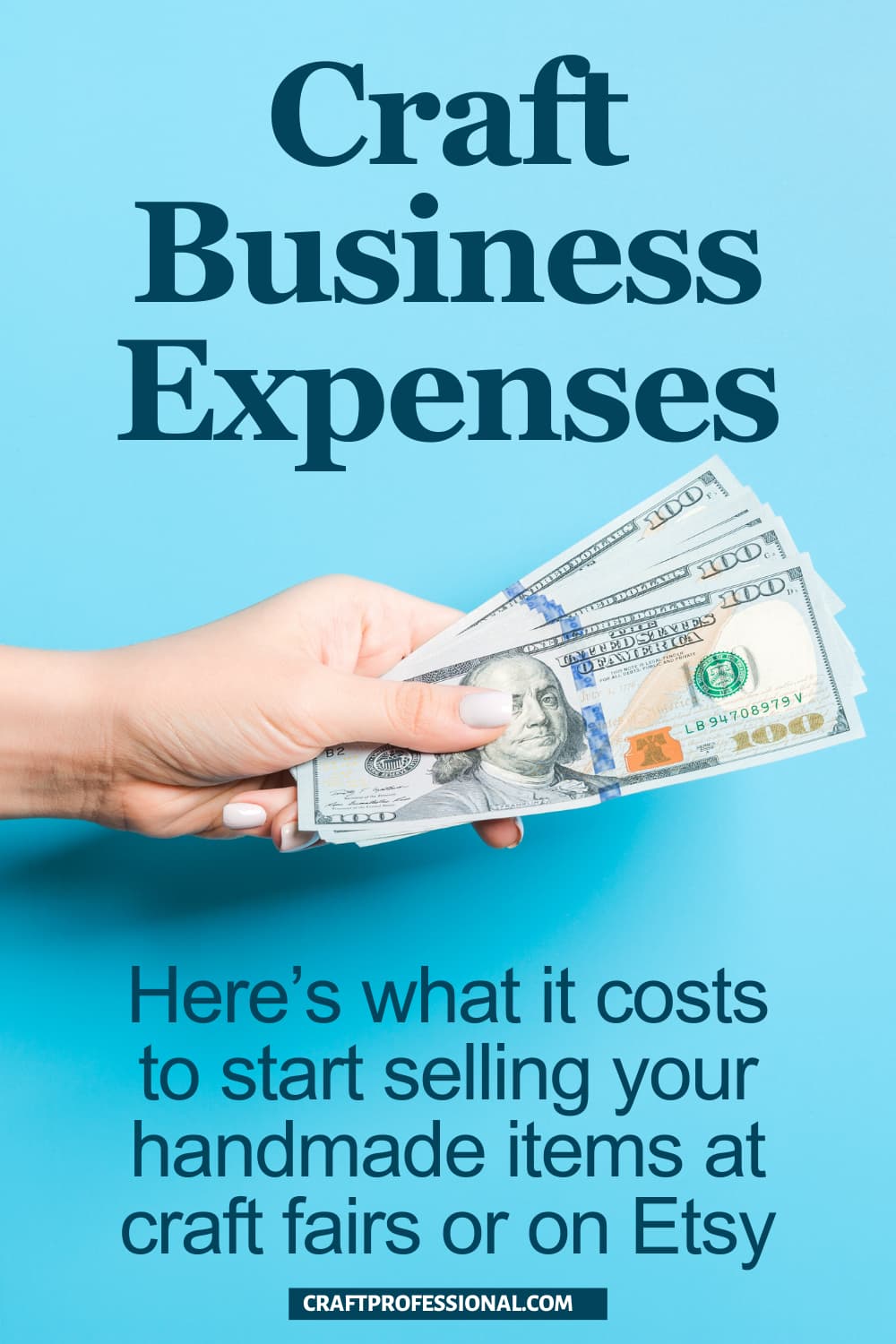- Home
- Craft Pricing
- Business Expenses That Impact Profits
Craft Pricing - Business Expenses That Impact Your Profits
If you're going to use a craft pricing formula to calculate how much to charge for the handmade items you sell, you'll need to know what your business expenses are.
If you're going to use some other pricing method, you're not off the hook. You still need to understand your expenses.
Calculating your your business expenses is essential is you want to know:
- when your business becomes profitable
- where you are spending your money
- what opportunities exist to reduce expenses
- what products, promotions, and sales venues provide the best financial return
You'll also need to track your expenses thoroughly and accurately to make the most of any tax write-offs that are allowed in your location.
Note: This information is meant to be used to help you price your crafts. There is overlap with business accounting; however, I am not an accountant. If you're looking for help with accounting, you should contact a professional accountant.

Each type of craft business is unique and will have a different set of expenses as well as different product pricing strategies.
The list of expenses below is quite comprehensive. Some items will not apply to your business, and you may have an additional expense that's not on the list.
Cost of Goods
We'll start with the expenses that are directly associated with making each item you sell. You'll need to have this information if you want to use a craft pricing formula.
In a craft business, expenses directly associated with making your product will typically include raw materials and labor.
If you ever read up on basic accounting, you may see the phrase "cost of goods". That's what we're referring to here.
Raw Materials Costs
Raw materials include all of the consumable elements used to make your product.
Determining the cost of raw materials that go into a single product may be very straightforward. For example, if you make handmade wreaths, and you use a single wreath form for each item, it's easy enough to determine how much that wreath form cost you.
Determining the cost of raw materials can take a little more work when your raw materials aren't used in such clear, discrete units.
For example, if you a 25 foot spool of sterling silver wire to make several pendants, the amount of wire you use on each pendant may not be immediately obvious. You'll need to figure that out. If you use roughly the same amount of wire on each pendant, you can use an approximation. So, if you can make 10 pendants with the 25 foot spool of wire, you can simply divide the cost of the wire by ten to determine the materials cost.
Labor Costs
Labor costs account for the amount of time spent making each item.
First, you'll need to determine the hourly rate you'll use to calculate your labor costs. Don't under-value your work here. Be sure to pay yourself at least minimum wage, ideally more if you can.
Next, determine the amount of time it typically takes you to make an item, and calculate the labor cost
Example 1:
If you pay yourself $20 per hour, and it take 2 hours to make an item, your labor costs are $40 per item.
Example 2:
If you pay yourself $20 per hour, and it take 20 minutes to make an item, your labor costs are $6.67 per item.
Overhead Costs
A lot of items fall into the overhead category.
If you use a formula to set your prices, it's not reasonable to try to factor every individual overhead expense into your price calculation. You'd spend all of your time doing math.
Instead, you can add a percentage of the material plus labor costs to account for overhead. 10-15% is typical, but you might go as high as 25% if your overhead costs are a particularly high percentage of your overall costs.
Example:
Go back to example 1 above. Your material plus labor costs are $40.
- Calculating overhead at 10% will add $4
- Calculating overhead at 15% will add $6
While you don't have to account for every expense when determining prices, it's still worthwhile to think through these expenses. This information will show you:
- where your money is going
- where you have room to reduce expenses to increase profit
- how much you need to sell to have a profitable business
List of Common Overhead Expenses
To help you work through all of your own business' expenses, here's a list of expenses many small business owners incur.
Selling Expenses
- Online Store or Marketplace Costs
- Commissions
- Booth Fees
Marketing Expenses
- Photography Expenses
- Display / Booth Setup
- Website
- Advertising
- Packaging
- Other Marketing Materials
Office / Studio Expenses
- Equipment and Tool Expenses
- Software
- Technology
- Packaging and Shipping Supplies
- Workspace Setup
- Storage Solutions
- Safety Equipment
- Maintenance and Repairs
- Renovation and Upgrades
Professional Fees
- Record Keeping
- Accounting
Business Insurance Expenses
Education and Skill Development
Utilities Expenses
- Gas Expense
- Electricity & Water Expense
- Internet Expense
- Cell Phone Expense
- Landline Expense
- Water Heater Rental
Travel Expenses
- Vehicle / Transportation
- Fuel
- Parking
- Hotel / Lodging
- Food while traveling for business
Banking Expenses
- Payment Processing Fees
- Banking Fees
- Currency Conversion and International Fees
Taxes and Licenses
- Permits
- Business License
- Professional Memberships / Accreditations
Once you have a complete list of your expenses, you're ready to calculate your break-even point, as well as possible wholesale and retail prices. This craft pricing calculator will make the task easy for you.



New! Comments
Have your say about what you just read! Leave me a comment in the box below.